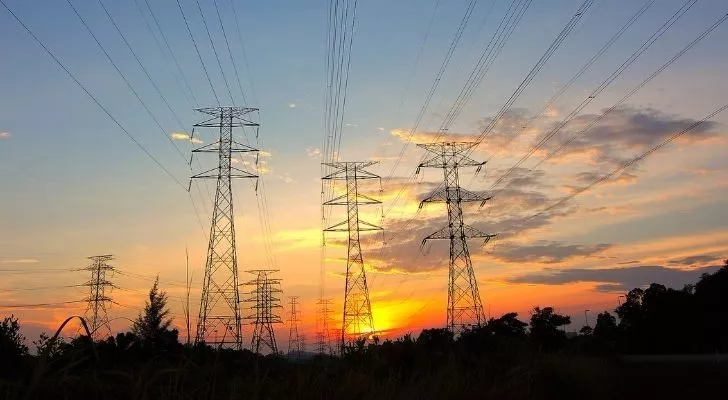Did you know that Thomas Edison invented the first incandescent light bulb that lasted long? Electricity is the flow of electric energy that powers our daily technology, from the smallest gadgets to the lights in our homes and the computers we work on.
But what exactly is electricity? Diving deeper into the complicated science of electricity raises more questions for laypeople. Even scientists have no definitive answers, but this is what makes discovering and understanding electricity fun.
How is Electricity Used?

Electricity is produced when charged particles are present or flowing. Electrons, negatively charged particles, are present in everything. When electrons flow freely in metals, they conduct electricity well.
A battery pushes electrons to travel in a complete circuit, creating an electric current that powers most of our devices. Static electricity occurs when electrons build up on an insulator, such as a balloon. When touched, the charge travels through the body to the ground, causing a slight shock.
Electricity travels in a closed circuit. When a switch is flipped on, the circuit is closed, and when it is turned off, the circuit is open.
Primary Sources of Electricity

Electricity comes in many different forms because primary sources must be converted into secondary energy sources to produce electricity. Renewable and nonrenewable energy sources are primary energy sources. Nonrenewable energy sources include coal, natural gas, and nuclear energy, while renewable sources include solar, wind, and hydroelectric energy.
Renewable vs. Nonrenewable Energy

Nonrenewable sources of energy cannot be replaced once they are used up. This poses a significant threat to humanity because most of our energy needs are met by nonrenewable sources, which are rapidly depleting. This is why environmentalists push for a greater dependence on renewable energy sources. Renewable energy sources are continuously replenished by natural processes and do not exhaust the resources, such as sunlight or wind.
Renewable energy not only benefits the environment, but it also produces more energy than it consumes.
Electricity in Our Homes

Electricity is delivered to us by utility companies through their power plants. Some utility companies generate their own energy, while others purchase it from other utility companies or independent sources. The electricity is transmitted through power lines, which form a complex system of transformers, substations, and power lines that connect to form a grid. This grid is where electricity travels through to reach us when we flip the switch. Electricity has changed the world we live in, with candles, whale oil lamps, and kerosene lamps providing light before it became widely available. Scientists and inventors such as Benjamin Franklin, Thomas Edison, and Nikola Tesla have made notable contributions to our understanding and use of electricity. Tesla’s inventions brought electricity into homes to power indoor lighting and factories to industrial power machines. Despite all this, many of us still take electricity for granted. It’s time to sing its praise.
FAQ
1. What is electricity?
Electricity is a form of energy that comes from the movement of charged particles. These particles can be found in atoms and molecules, and they carry an electrical charge that can be positive or negative. When these charged particles are in motion, they create an electric current that can be harnessed to power machines, appliances, and other devices.
2. How is electricity generated?
Electricity can be generated in many different ways, including through the burning of fossil fuels, the use of nuclear power, and the harnessing of renewable energy sources like wind, solar, and hydro power. These methods all involve the use of generators, which convert the motion of spinning turbines into electrical energy.
3. What are the different types of electricity?
There are two main types of electricity: direct current (DC) and alternating current (AC). DC electricity flows in a single direction, while AC electricity changes direction periodically. AC electricity is the type that is used in most homes and businesses, as it can be easily transmitted over long distances using transformers.
4. What are some common electrical devices?
Some common electrical devices include light bulbs, televisions, computers, and refrigerators. These devices all require electricity to function, and they are designed to convert electrical energy into other forms of energy, like light, heat, or motion.
5. What are some safety precautions when working with electricity?
When working with electricity, it is important to take certain safety precautions to avoid electrical shocks or burns. These precautions include wearing protective gear like rubber gloves and boots, using insulated tools, and avoiding contact with live wires or circuits.
6. How is electricity distributed?
Electricity is typically generated at power plants and then distributed to homes and businesses through a network of power lines and transformers. The voltage of the electricity is stepped up or down as needed to ensure that it can be safely transmitted over long distances.
7. What is the difference between a conductor and an insulator?
A conductor is a material that allows electrical current to flow through it easily, while an insulator is a material that resists the flow of electrical current. Examples of conductors include metals like copper and aluminum, while examples of insulators include rubber and plastic.
8. How does electricity impact the environment?
The production and use of electricity can have both positive and negative impacts on the environment. For example, the burning of fossil fuels to generate electricity can release greenhouse gases that contribute to global warming, while the use of renewable energy sources like wind and solar power can help reduce these emissions. Additionally, the construction of power plants and transmission lines can have negative impacts on ecosystems and wildlife habitats.

Zayn Anderson is a prolific writer with a passion for uncovering the world’s intriguing facts. Armed with an insatiable curiosity, he delves into various subjects, from history and science to nature and technology.
